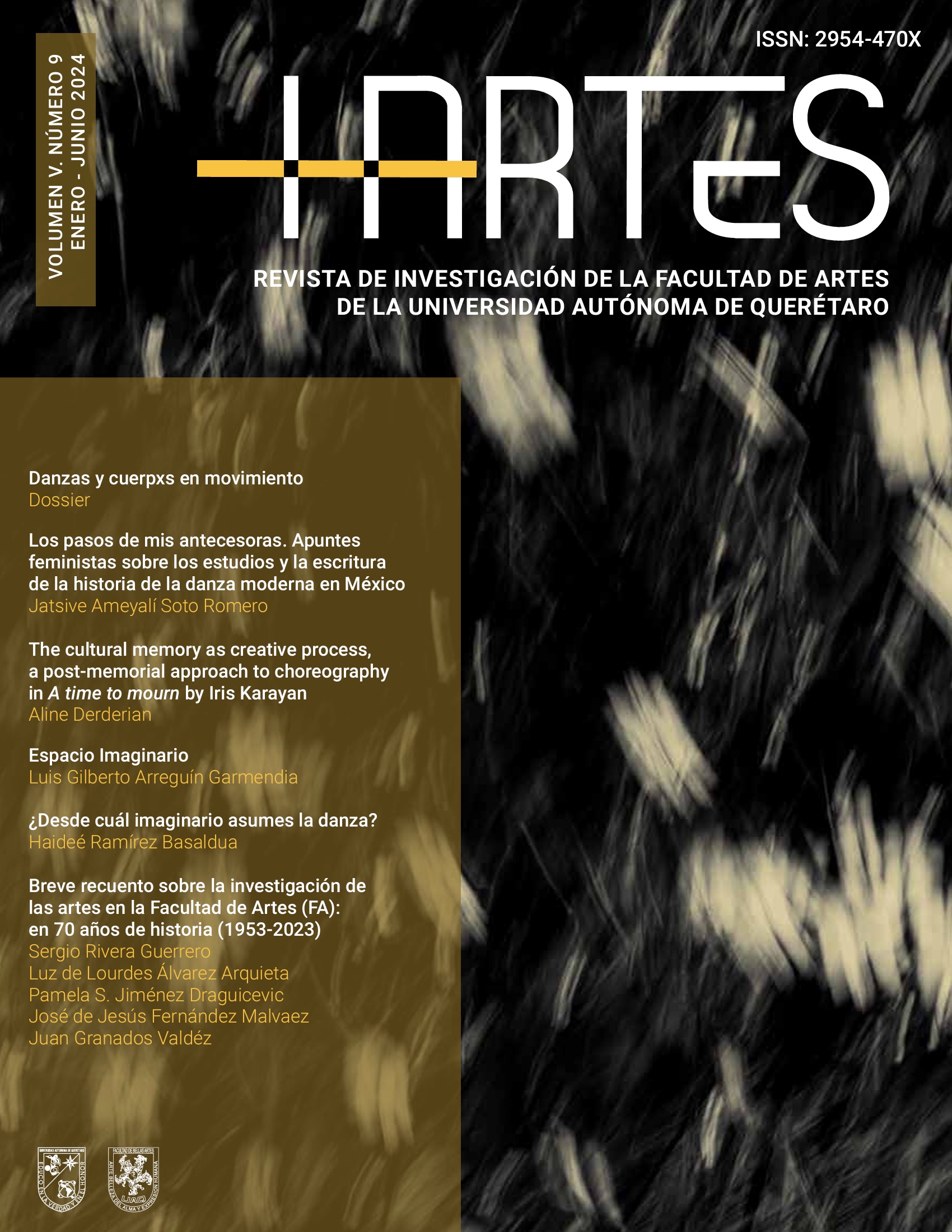Abstract
This research analyzes the staging of Martha Graham’s Steps in the Street in which the choreographer sought to highlight contemporary problems that threatened the world such as European fascism, the great depression and the Spanish civil war. Proposing dance as a manifestation of political redistribution, that is, placing bodies in specific spaces as an intervention in the flow of everyday movement. Based on the postulates of André Lepecki and Jacques Rancière in order to counteract the passivity of the spectator and actively engage in the artistic experience in relation to space, by reassessing social realities and thus provoking a profound reflection on the themes addressed in the work.
References
Baril, J. (1987). La danza moderna. Barcelona: Paidos Iberica Ediciones S.A.
Graham, M. (1995). Blood Memory. Barcelona: CIRCE Ediciones.
Guglielmotti, F. (17 de mayo de 2020). Steps in the Street (por Florencia Guglielmotti). Gaspar, El Lugareño. Recuperado de http://www.ellugareno.com/search?q=steps+in+the+street
Lepecki, A. (2007). Exhausting Dance: Performance and the Politics of Movement. Nueva York y Londres: Routledge.
Lepecki, A. (2012). Coreopolítica y coreopolicía. Ciudad de México. Fluir ediciones.
Rancière, J. (2010). El espectador emancipado. Buenos Aires: EdicionesManantial.
Rancière, J. (2000). El reparto de lo sensible: Estética y política. Buenos Aires: Prometeo libros.

This work is licensed under a Creative Commons Attribution-NonCommercial-ShareAlike 4.0 International License.
Copyright (c) 2024 HArtes


